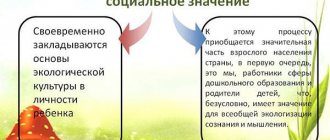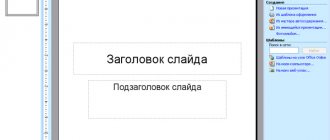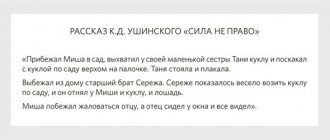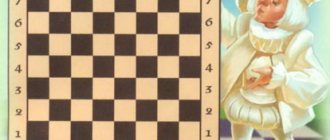MAGAZINE Preschooler.RF
Psycho-gymnastic exercises for teachersPsycho-gymnastic exercises are aimed at achieving two main goals in relation to teaching activities. Firstly, they contribute to the harmonization of the teacher’s inner world, weakening his mental tension, and relieving some neurotic reactions, i.e., they have purely psychotherapeutic goals. Secondly, they are aimed at developing the teacher’s internal mental strength, expanding his professional self-awareness, and forming pedagogical reflection in his activities. Regular performance by educators of psycho-gymnastic game exercises will help him correctly navigate his own mental states, adequately assess them and effectively manage them to preserve and strengthen his own mental health and, as a consequence, achieve success in professional activities with a relatively small expenditure of neuropsychic energy.
The psychologist can carry out the presented exercises both when working individually and when working with a group.
1) Exercises used to relieve emotional stress.
In any profession that is replete with stressful situations, and the work of a preschool teacher belongs to this category of professions, an important condition for preserving and strengthening the mental health of the employee is his ability to “relieve” tension in a timely manner, remove internal “clamps” and relax. Within 3-5 minutes spent doing the exercises, the teacher will be able to relieve fatigue and gain a state of internal stability, freedom, and self-confidence.
Psychotechnical exercises can be performed in the group’s playroom or bedroom before class or immediately after it ends. Relaxation psychotechnics can be practiced as needed.
Exercise “Inner Ray”
The exercise is performed individually; Helps relieve fatigue and gain inner stability.
In order to perform the exercise, you need to take a comfortable position, sitting or standing, depending on where it will be performed.
Imagine that inside your head, in the upper part, a light ray appears, which slowly and consistently moves from top to bottom and slowly, gradually illuminates your face, neck, shoulders, hands with a warm, even and relaxing light. As the beam moves, wrinkles are smoothed out, tension in the back of the head disappears, the fold on the forehead is weakened, the eyebrows fall, the “cool” , the clamps in the corners of the lips are loosened, the shoulders drop, the neck and chest are freed. The inner ray, as it were, forms a new appearance of a calm, liberated person, satisfied with himself and his life, profession and students.
Perform the exercise several times - from top to bottom.
Doing the exercise will give you pleasure, even pleasure. Finish the exercise with the words: “I have become a new person , “I have become strong, calm and stable! I will do everything well!” .
Exercise "Press"
The gaming exercise neutralizes and suppresses negative emotions of anger, irritation, increased anxiety, and aggression. It is better to do the exercise before work on a “difficult” day, or with parents, before any psychologically stressful situation that requires internal composure and self-confidence. The exercise is best done immediately after you feel psychological tension.
The essence of the exercise is as follows. The teacher imagines inside himself, at chest level, a powerful press that moves from top to bottom, suppressing emerging negative emotions and the internal tension associated with them. When performing the exercise, it is important to achieve a clear feeling of the physical heaviness of the internal press, suppressing and, as it were, pushing down unwanted negative emotions and the energy that it carries with it.
Exercise "Tree"
Any tense psychological state is characterized by a narrowing of consciousness and a person’s hyper-concentration on his experiences.
A noticeable weakening of internal tension is achieved if a person has managed to take action from the center of the situation from himself and transferred it to some object or external circumstances. Decentration allows you to transfer, “throw out” a negative state into the external environment and thereby get rid of it.
There are several forms of decentration. Role decentration is associated with the transformation of a person, mental inclusion in another situation. Pedagogical reflection is used, the teacher tries to look at himself “from the outside ,” to analyze the situation through the eyes of an external observer. Communicative decentration is carried out in dialogue with a change in communicative positions.
Exercise develops internal stability, creates a balance of neuropsychic processes, freeing you from a traumatic situation.
The presenter gives commands: Imagine yourself as a tree (whichever one you like, which one is easiest to identify with). Replay in detail the image of this tree in your mind: its powerful and flexible trunk, intertwining branches, foliage rustling in the wind, the openness of the crown to the sun’s rays and the moisture of the rain, the circulation of nutritious juices along the trunk, the roots firmly rooted in the ground. It is important to feel the nutritious juices that the roots draw from the ground. The earth is a symbol of life, roots are a symbol of stability, a person’s connection with reality.
Exercise "Head"
The profession of a teacher belongs not only to the category of stress, it is a profession of managerial work. The teacher needs to continuously influence students during the working day: restrain them in some way, suppress their will and activity, evaluate, control. Such intensive management of the educational situation causes overstrain and various physical ailments in the teacher. One of the most common complaints of teachers is headaches and heaviness in the occipital region of the head. This exercise can relieve unpleasant somatic sensations.
Leading:
- Stand straight, shoulders back, head back. Try to feel in which part of the head the feeling of heaviness is localized. Imagine that you are wearing a bulky headdress that puts pressure on your head in the place where you feel heaviness. Mentally remove the headdress with your hand and expressively and emotionally throw it to the floor. Shake your head, straighten the hair on your head with your hand, and then throw your hands down, as if getting rid of a headache.
Exercise "Hands"
The exercise is best done at the end of the working day, when fatigue has accumulated and performance has decreased. Exercise relieves fatigue and helps establish mental equilibrium and balance.
Leading:
- Sit on a chair with your legs slightly extended and your arms hanging down. Try to imagine that the energy of fatigue “flows” from the hands to the ground - it flows from the head to the shoulders, flows over the forearms, reaches the elbows, rushes to the hands and seeps down through the fingertips into the ground. You clearly physically feel the warm weight sliding over your hands. Sit like this for one or two minutes, and then lightly shake your hands, finally getting rid of your fatigue. Stand up easily, springily, smile, walk around.
Exercise “Mood”
The exercise is carried out to relieve emotional stress and improve mood.
Leading:
- Take colored pencils or crayons and a blank sheet of paper. Relaxingly, with your left hand, draw an abstract plot - lines, color spots, shapes. It is important to completely immerse yourself in your experiences, choose a color and draw the lines the way you want, in full accordance with your mood. Try to imagine that you are transferring your sad mood onto paper, as if materializing it.
Have you finished your drawing? Now turn the paper over and on the other side of the sheet write 5-7 words that reflect your mood. Don't think too long; it is necessary that words arise spontaneously, without special control on your part.
After this, look at your drawing again, as if reliving your state, count the words and with pleasure, emotionally tear up the piece of paper and throw it in the trash.
2) Adaptation exercises.
This group of exercises is intended mainly for working with young teachers. They are used to develop the teacher’s adaptation to school conditions, contribute to the development of observation, concentration, and self-control. By developing these qualities, a young teacher will be able to go through the adaptation period faster and more effectively.
Exercise "Focus"
The exercise is performed 10-15 minutes before the start of the lesson. The teacher is invited to sit comfortably on a chair and focus his attention on one or another part of the body and feel its warmth. The psychologist gives instructions on which part of the body to focus on. For example, on command on the command “Hand!” — you need to focus on your right hand, “Brush!” - on the right hand, “Finger!” - on the index finger of the right hand and, finally, at the command “Tip of the finger!” - on the tip of the index finger of the right hand. Commands are given at intervals of 10-12 seconds.
Exercise "Breathing"
It is advisable to perform the exercise before starting class. The teacher is asked to sit in a chair or chair, relax and close his eyes. On command, you need to try to turn off your attention from the external situation and focus on your breathing. At the same time, you do not need to specifically control your breathing: you do not need to disrupt its natural rhythm. The exercise is performed for 5-10 minutes.
Exercise “Switching attention”
The teacher needs to be able to easily and quickly switch from one type of activity to another.
It is advisable to carry out the exercise during breaks between classes for 15-20 minutes. The presenter suggests: “Do counting (arithmetic operations with numbers), then, after 3-4 minutes after starting counting without transition, immediately start reading a complex newspaper text for 5-7 minutes. Stop. Look at how many mistakes you made in the calculations, and also try to reproduce the text you read as fully and in more detail as possible .
3) Exercises to develop learning skills
This group of exercises is used to improve the pedagogical competence of teachers, their ability to analyze, discuss, logically and clearly explain educational material. Exercises can be carried out at specially organized educational and methodological seminars, as well as at pedagogical councils.
Illustrative Explanation Exercise
(props: topic and lesson plan, visuals in the form of a set of drawings, posters, slides, films, video or film fragments, sound in the form of excerpts of phonograms, educational visual aids in the form of layouts, product samples)
Leading:
- Dear Colleagues! We gathered to conduct a collective lesson on mastering the illustrative and explanatory method of teaching. It is advisable that each of the participants in the game make a proposal about the topic of the lesson being conducted jointly, its plan and the audiovisual material and educational visual aids used. Ideally, each phrase uttered by the teacher should be accompanied, for example, by turning on an overhead projector, tape recorder or video recorder. Educational information can be demonstrated multichannel but from several sources at once, for example, through a slide projector, video recorder, computer, using posters, working models or product samples. In the teacher’s explanation, each time attention is drawn sequentially to one of the used sources of information. Do not be afraid of the abundance of information - a variety of sources of information will create a situation of novelty and diversity and, despite the great information richness, such an activity will be received with interest by students and will leave a good impression. So, discuss the proposals of those present, choose the most prepared debutant to conduct the lesson and the topic of the lesson. Please!
Time is given to prepare.
Leading:
— Debutant, for one or two minutes try to briefly talk about the topic you are proposing and the illustrative material you are using. Participants of the game, express your wishes before the start of the lesson. We ask you. Now, if everyone is completely ready, let's conduct this lesson. Everyone takes an active part, because next time you could be in the place of the debutant. Let's start the lesson!
Everyone listens carefully to the speaker.
Leading:
— We are finishing the lesson. We ask everyone to express their impressions.
Exercise "Discussion"
(Discussion topics and roles should be prepared in advance)
Leading:
- Dear Colleagues! We will conduct this lesson in the form of a discussion. There are a lot of topics for discussion, but it makes sense to choose the most relevant ones. Perhaps the most difficult thing in a discussion is to conduct it briefly, so that practical conclusions are formed as a result. So, let one of you take the initiative to agree on the topic of the discussion with everyone and determine the rules for its conduct. Please. (Time is given for discussion).
Leading:
- So, the topic and time have been determined. It remains to distribute the roles. Someone must take the initiative to briefly describe the subject of discussion. Please. Now we will hear fundamental opinions that fundamentally and from different angles examine the subject of discussion. Presenter, give the floor to those who want to express fundamental, albeit opposing, opinions. But don't get into an argument just yet. Please!
Leading:
— If the main opinions have been expressed, we suggest this procedure. You can change seats in such a way that each speaker’s followers sit behind him. Thus, we will be able to clearly see the mass character of each faction and determine the strength of supporters and opponents. Please change seats. Now we propose that from each opposition one supporter of their leader speak and try to develop the opinion expressed by him without entering into a discussion. Presenter, give the floor to everyone, strictly following the rules.
Leading:
— Now we propose a civilized intellectual duel between representatives of the opposition. We propose that two representatives of different factions come forward and, in a civilized debate in front of everyone, try to convince each other that they are right.
Now let’s determine the opinion of the majority of voters. We ask the secretary to write down the opinions accepted by the majority. Please.
Leading:
- We are finishing the combat. Now you can start a discussion between representatives from each faction. Select one representative from each faction. The discussion begins!
In conclusion, let's listen to those who have not yet spoken out. Let's summarize.
Exercise “Problem-based learning”
Leading:
- Let's conduct this lesson as a problem one. We will select, from among those proposed, educational material that best suits the style of problem-based learning. But for this, everyone, take an educational text, try to break it down into separate components, each of which can be presented in the form of a problem, and try to formulate each component of the problematic question so that students can sort of figure out this text after hearing only the question. So, please, break the text into fragments and, on a separate piece of paper, formulate a series of sequential questions for each component of the text.
Leading:
- If you have already finished, inform the presenter that you are ready. Please.
The facilitator can choose one of the prepared problem questions and provide the opportunity for the author of the questions to conduct a problem lesson. To do this, the presenter announces the topic of the lesson, asks a problematic question and leads everyone present to a collective answer to it.
Leading:
- So, consistently asking a problematic question and receiving a collective answer to it, let’s summarize what was said with the text for which you composed the problematic question. And so on until the end of the text.
Let's summarize.
| Next > |






